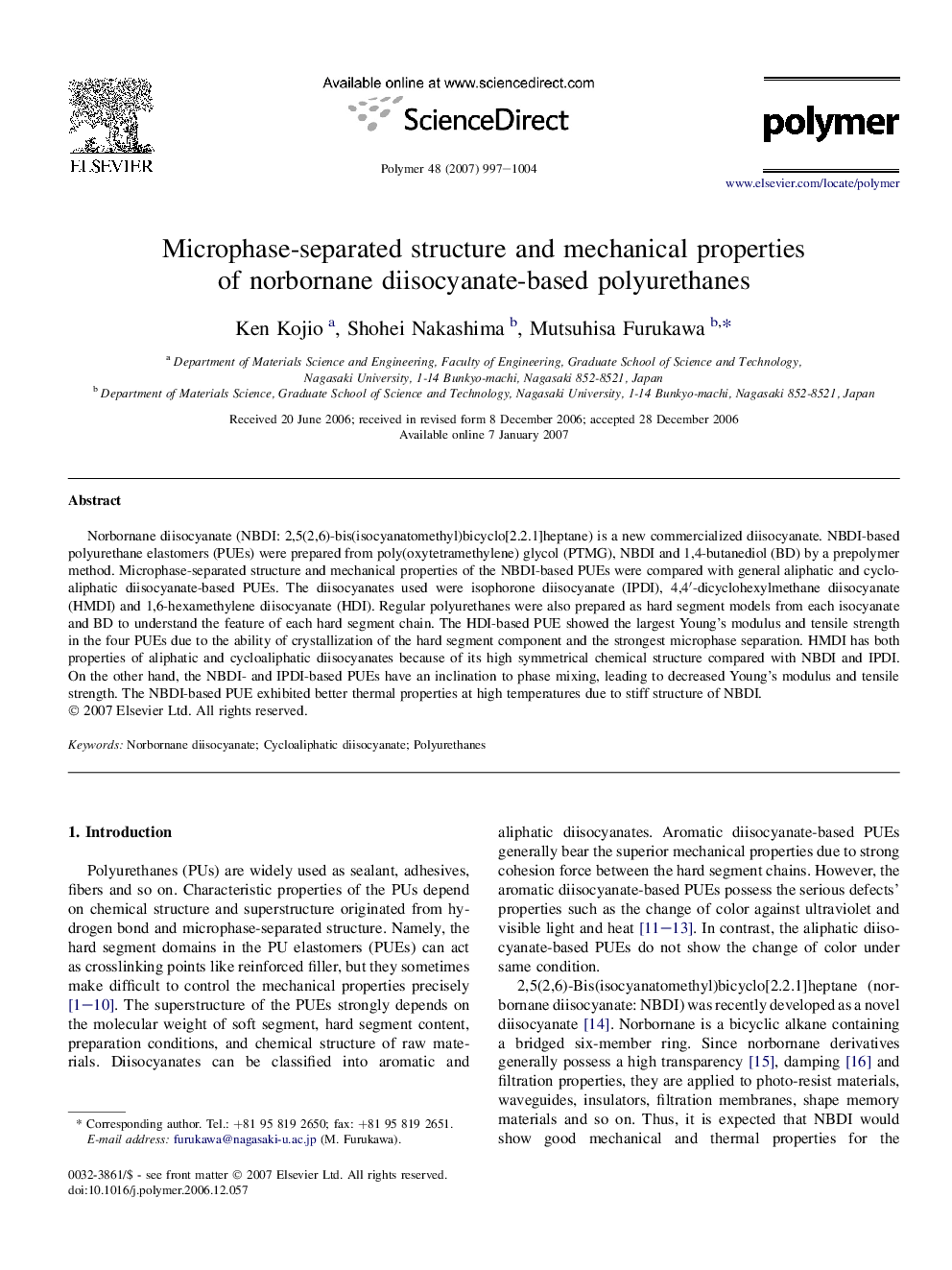| Article ID | Journal | Published Year | Pages | File Type |
|---|---|---|---|---|
| 5188946 | Polymer | 2007 | 8 Pages |
Norbornane diisocyanate (NBDI: 2,5(2,6)-bis(isocyanatomethyl)bicyclo[2.2.1]heptane) is a new commercialized diisocyanate. NBDI-based polyurethane elastomers (PUEs) were prepared from poly(oxytetramethylene) glycol (PTMG), NBDI and 1,4-butanediol (BD) by a prepolymer method. Microphase-separated structure and mechanical properties of the NBDI-based PUEs were compared with general aliphatic and cycloaliphatic diisocyanate-based PUEs. The diisocyanates used were isophorone diisocyanate (IPDI), 4,4â²-dicyclohexylmethane diisocyanate (HMDI) and 1,6-hexamethylene diisocyanate (HDI). Regular polyurethanes were also prepared as hard segment models from each isocyanate and BD to understand the feature of each hard segment chain. The HDI-based PUE showed the largest Young's modulus and tensile strength in the four PUEs due to the ability of crystallization of the hard segment component and the strongest microphase separation. HMDI has both properties of aliphatic and cycloaliphatic diisocyanates because of its high symmetrical chemical structure compared with NBDI and IPDI. On the other hand, the NBDI- and IPDI-based PUEs have an inclination to phase mixing, leading to decreased Young's modulus and tensile strength. The NBDI-based PUE exhibited better thermal properties at high temperatures due to stiff structure of NBDI.
